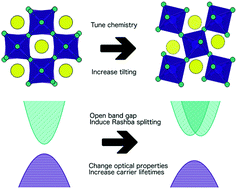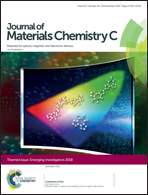The chemical forces underlying octahedral tilting in halide perovskites†
Abstract
Perovskites (ABX3) display a wide range of chemical and structural heterogeniety, which has led to them being one of the most used and studied crystal structures. The perovskite structure consists of corner sharing BX6 octahedra forming a cubic net, encapsulating A-site cations in the ABX3 formula. Tilting of the BX6 octahedra is linked to many fascinating phenomena such as ferroelectrictiy in Pb(Zr,Ti)O3 and Rashba splitting in CH3NH3PbI3. In this contribution I use simple pairwise interatomic potentials, parameterised for halide perovskites, to explore how different physical chemical forces can drive tilting of the octahedra away from the idealised cubic net structure. By varying parameters related to A–X and B–X bond ionicity, X–X dispersion interactions and Pauli repulsion on the A and B sites, the different structural effects of these forces are elucidated. Changing A–X or B–X ionicity is found to favour different tilting distortions, dispersion is found to favour cubic structures and Pauli repulsion can drive tilting to orthorhombic or tetragonal phases. The results and methodology can be easily extended to solid solutions of A, B or X sites.

- This article is part of the themed collection: Journal of Materials Chemistry C Emerging Investigators


 Please wait while we load your content...
Please wait while we load your content...